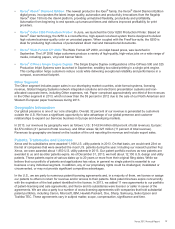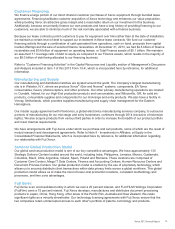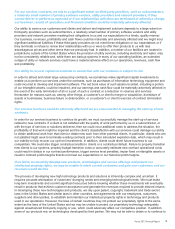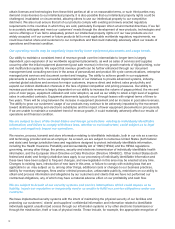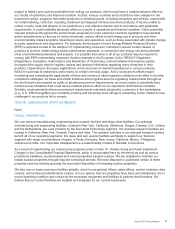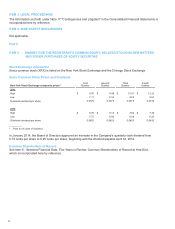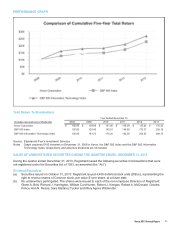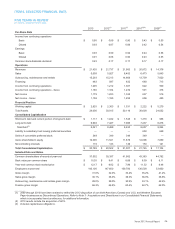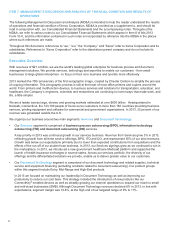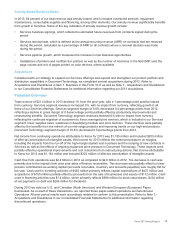Xerox 2013 Annual Report Download - page 35
Download and view the complete annual report
Please find page 35 of the 2013 Xerox annual report below. You can navigate through the pages in the report by either clicking on the pages listed below, or by using the keyword search tool below to find specific information within the annual report.For our services contracts, we rely to a significant extent on third-party providers, such as subcontractors,
a relatively small number of primary software vendors, utility providers and network providers; if they
cannot deliver or perform as expected or if our relationships with them are terminated or otherwise change,
our business, results of operations and financial condition could be materially adversely affected.
Our ability to service our customers and clients and deliver and implement solutions depends to a large extent on
third-party providers such as subcontractors, a relatively small number of primary software vendors and utility
providers and network providers meeting their obligations to us and our expectations in a timely, quality manner.
Our business, revenues, profitability and cash flows could be materially and adversely affected and we might incur
significant additional liabilities if these third-party providers do not meet these obligations or our expectations or if
they terminate or refuse to renew their relationships with us or were to offer their products to us with less
advantageous prices and other terms than we previously had. In addition, a number of our facilities are located in
jurisdictions outside of the United States where the provision of utility services, including electricity and water, may
not be consistently reliable and, while there are backup systems in many of our operating facilities, an extended
outage of utility or network services could have a material adverse effect on our operations, revenues, cash flow
and profitability.
Our ability to recover capital investments in connection with our contracts is subject to risk.
In order to attract and retain large outsourcing contracts, we sometimes make significant capital investments to
enable us to perform our services under the contracts, such as purchases of information technology equipment and
costs incurred to develop and implement software. The net book value of such assets recorded, including a portion
of our intangible assets, could be impaired, and our earnings and cash flow could be materially adversely affected in
the event of the early termination of all or a part of such a contract or a reduction in volumes and services
thereunder for reasons such as, among other things, a customer's or client's merger or acquisition, divestiture of
assets or businesses, business failure or deterioration, or a customer's or client's exercise of contract termination
rights.
Our services business could be adversely affected if we are unsuccessful in managing the start-up of new
contracts.
In order for our services business to continue its growth, we must successfully manage the start-up of services
related to new contracts. If a client is not satisfied with the quality of work performed by us or a subcontractor, or
with the type of services or solutions delivered, then we could incur additional costs to address the situation, the
profitability of that work might be impaired and the client's dissatisfaction with our services could damage our ability
to obtain additional work from that client or obtain new work from other potential clients. In particular, clients who are
not satisfied might seek to terminate existing contracts prior to their scheduled expiration date, which may result in
our inability to fully recover our up-front investments. In addition, clients could direct future business to our
competitors. We could also trigger contractual credits to clients or a contractual default. Failure to properly transition
new clients to our systems, properly budget transition costs or accurately estimate new contract operational costs
could result in delays in our contract performance, trigger service level penalties, impair fixed or intangible assets or
result in contract profit margins that do not meet our expectations or our historical profit margins.
If we fail to successfully develop new products, technologies and service offerings and protect our
intellectual property rights, we may be unable to retain current customers and gain new customers and our
revenues would decline.
The process of developing new high technology products and solutions is inherently complex and uncertain. It
requires accurate anticipation of customers' changing needs and emerging technological trends. We must make
long-term investments and commit significant resources before knowing whether these investments will eventually
result in products that achieve customer acceptance and generate the revenues required to provide desired returns.
In developing these new technologies and products, we rely upon patent, copyright, trademark and trade secret
laws in the United States and similar laws in other countries, and agreements with our employees, customers,
suppliers and other parties, to establish and maintain our intellectual property rights in technology and products
used in our operations. However, the laws of certain countries may not protect our proprietary rights to the same
extent as the laws of the United States and we may be unable to protect our proprietary technology adequately
against unauthorized third-party copying or use, which could adversely affect our competitive position. In addition,
some of our products rely on technologies developed by third parties. We may not be able to obtain or to continue to
Xerox 2013 Annual Report 18






